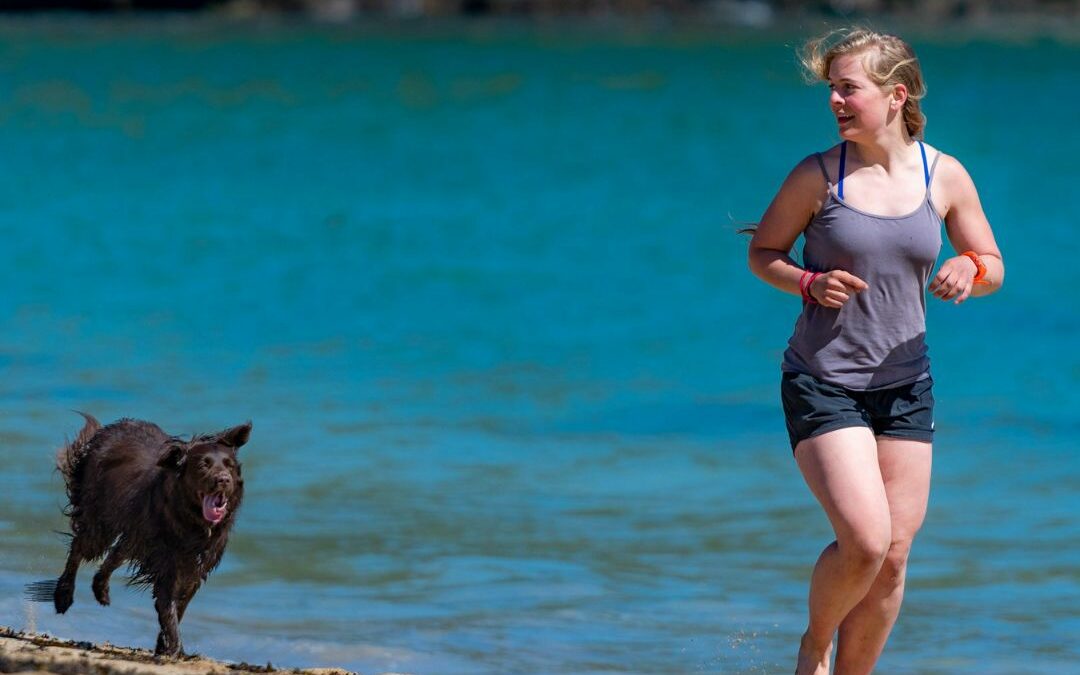A few years ago when so many of us were in lockdown and working from home, a lot of people got dogs for companionship but also to ensure that they would get out of the house every day, multiple times a day, and go for a walk and get some fresh air. At one point it was even hard to find dogs to adopt! (Did any of you adopt during that time?) And then there are you dog owners out there who want to take that up a few notches and dream of running with you dog.
There are things to consider, for sure. A lot of breeds are great running companions, and it’s not just the bigger breeds. Jack Russells, for example, are small but are great runners and need a lot of exercise to be happy and healthy.
The usuals you would expect make great runners: border collies, our beloved labrador retrievers, and dalmatians just to name a few. Think longer legged dogs with thinner, muscular builds.
In general, most dogs love to run but there are exceptions and they aren’t necessarily breed specific but dog specific. (Though for a list of the best breeds for running, check this.)
Why dogs won’t make great running companions
Consider the following:
- Take a look at your dog’s overall health. In particular: do they have any joint issues? Or are they a breed that has odd breathing issues? These both might be a no. (You can always check with your vet.)
- What is their weight like? An overweight dog might need to lose a few pounds through more walking before starting to run with you.
- Do they have the right temperament? I mean, if you’ve ever run with a human who just doesn’t have the personality for it, you know how it might be for some dogs. You’ll spend more time trying to coax them (the dogs… and the humans) and it just won’t be worth it for either of you.
How to get started
- First, wait until your dog is full grown before starting. Running with a puppy is not a good idea and can cause damage as their bones are not fully developed.
- Even if your dog is full grown, it’s a good idea to check in with your vet and get the green light to start.
- You’ll need some patience because you’ll want to start slowly and with little bits of running. Nothing too fast or too far to start. You’ll build up their abilities over time.
- So start by interjecting little bits of running into your walks.
- Create start and stop words or phrases and start training them with those. Use words that you will make specific to running, not what you might use while walking. You don’t want to confuse them.
- Consider your collar and leash. You can read the basics of leashes here and the basics of collars here.
Basic tips for running with your dog
- Make sure you have water on you or you know where you can stop for clean water.
- Have some treats on hand and plan out snack stops if you’re running for a longer time.
- Have a plan in case your dog gets tired and can’t complete the run.
- If possible, run where there are trash cans so you don’t end up running for too long with poop bags.
- After the run, remember your dog needs recovery time and attention just like you do. Consider giving them a good, brisk brushing and a gentle massage as a thank you.

